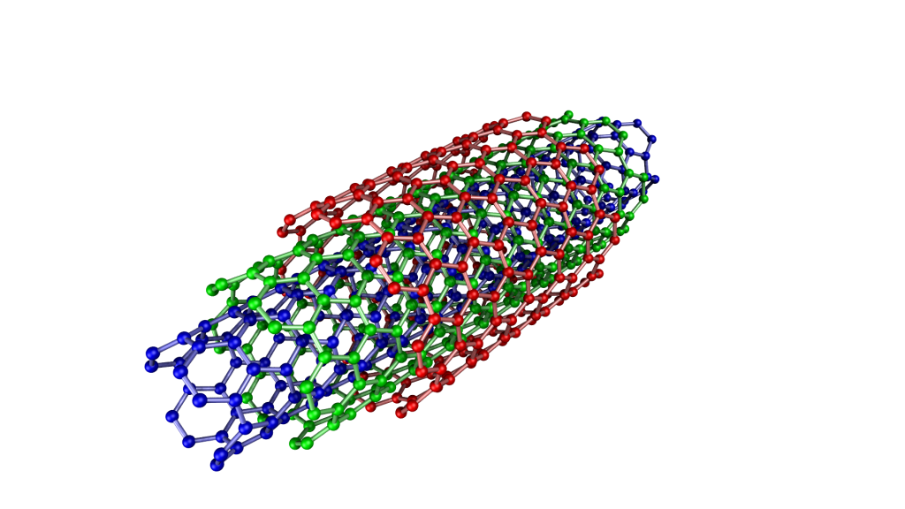
JRC scientists have published a series of papers assessing the availability and applicability of computational models in the safety assessment of nanomaterials, with a view to promoting their further development and use in regulatory decision making.
Manufactured nanomaterials are increasingly being included in a variety of products because of novel characteristics related to their small size and surface properties. However, concerns have been raised about their potential adverse effects on the environment and human health. This has led to an increasing interest in the safety assessment of nanomaterials, particularly using computational and other non-animal methods.
Considerable scientific progress has been made in developing computational approaches for predicting the hazardous properties of nanomaterials, although challenges remain in translating these developments into regulatory practice. This was one of the conclusions of the Nanocomput project, carried out by the JRC on behalf of DG GROW.
By reviewing the scientific literature, JRC scientists have published overviews of different kinds of computational models. These include models that predict physicochemical properties and toxicity, as well as models that simulate the time-dependent distribution of nanomaterials in cell-based test systems, and in biological organisms and the environment. The information used to survey the “model landscape” is publicly available as a dataset in the JRC Data Catalogue.
Another common approach for predicting toxicity is based on the grouping of nanomaterials with similar physicochemical characteristics, which are assumed to cause similar toxicological effects. However, while the grouping approach has been applied extensively to chemicals, it has been more challenging for nanomaterials. Therefore, the JRC explored the approach by developing case studies on the possible genotoxic effects of nano titania (TiO2) and multi-walled carbon nanotubes. The experience obtained with the nano TiO2 case study was shared with Member Countries of the Organisation for Economic Cooperation and Development (OECD) as a contribution to the OECD project on Integrated Approaches to Testing and Assessment (IATA).
In the future, it is expected that knowledge on the mechanisms of action of nanomaterials will be increasingly used to inform the development of safety assessment methodology. For example, biological knowledge on both chemicals and nanomaterials can be integrated and exploited by using Adverse Outcome Pathways, as illustrated in the case of liver toxicity.
Read more in:
- Worth A. et al. (2017). "Evaluation of the availability and applicability of computational approaches in the safety assessment of nanomaterials", EUR 28617 EN, Publications Office of the European Union, Luxembourg, 2017, ISBN 978-92-79-68708-2, doi: 10.2760/248139.
- JRC Science Update, 29 September 2017. Review of computational models for the safety assessment of nanomaterials.
- Lamon L. et al. (2018). Computational models for the assessment of manufactured nanomaterials: development of model reporting standards and mapping of the model landscape, Computational Toxicology, in press.
- Graepel R. et al. (2017). The virtual cell based assay: Current status and future perspectives, Toxicology in Vitro 45, 258-267.
- Lamon, L. et al. (2018). Physiologically based mathematical models of nanomaterials for regulatory toxicology: A review, Computational Toxicology, in press.
- Worth A. et al. (2017). Computational models for the safety assessment of nanomaterials. European Commission, Joint Research Centre (JRC) [Dataset] PID.
- Lamon L. et al. (2018). Grouping of nanomaterials to read-across hazard endpoints: from data collection to assessment of the grouping hypothesis by application of chemoinformatic techniques. Particle and Fibre Toxicology 15: 37.
- Aschberger K. et al. (2018). Grouping of multi-walled carbon nanotubes to read across genotoxicity: a case study to evaluate the applicability of regulatory guidance. Computational Toxicology 9, 22–35.
- OECD (2018). Case study on grouping and read-across for nanomaterials – genotoxicity of nano-TiO2, Series on Testing and Assessment No. 292, ENV/JM/MONO(2018)2.
- JRC Science Update, 4 April 2017. Understanding nanomaterial toxicity by leveraging mechanistic information on chemicals.
- Gerloff K., et al. (2017). The Adverse Outcome Pathway approach in nanotoxicology. Computational Toxicology 1, 3–11.
Related Content
Alternatives to animal testing and safety assessment of chemicals
Details
- Publication date
- 18 December 2018
